
Dietary Changes to Lower Cholesterol
Part of your annual wellness visit may include checking your cholesterol, which is a waxy substance found in our blood. Total cholesterol is composed of HDL, LDL and Triglycerides. HDL is considered “good” cholesterol, while LDL is considered “bad” cholesterol. These two components work together to keep blood flowing through our arteries. If your LDL is too high, it can cause buildup in the arteries leading to stroke or heart attack.
What can I do to lower my total cholesterol?
If you are moderate to high risk, your doctor may suggest medication. However, modifying your diet, quitting smoking, and exercising regularly can also help to improve your numbers. The most common diets for lowering cholesterol and improving heart health are the Portfolio Diet, the DASH diet (“Dietary Approach to Stop Hypertension”), and the Mediterranean diet.

Portfolio Diet
Specifically designed to incorporate foods known to help lower LDL cholesterol. This diet follows the American Heart Association Step 2, which is a diet low in saturated fat and higher in fiber and vegetables. It also includes specific supplemental foods and food ingredients including almonds, plant sterols, soy protein, and viscous fibers present in foods like oat bran, okra and eggplant. It is recommended that you substitute soy protein foods for meat, drink soy milk instead of cow’s milk and eat as much viscous fiber as possible. Oats and barley replace other grains and preferred vegetables are eggplant and okra, you also want to include plant sterol-enriched margarine, and a handful of nuts every day. Plant sterols are also available in capsule form as dietary supplements.
Sample Meal Plan following the Portfolio Diet:
Breakfast: Soy milk, oat bran cereal with chopped fruit and almonds, oatmeal bread with sterol-enriched margarine, and some jam.
Lunch: Soy lunchmeat on oat bran bread, bean soup, and fruit.
Dinner: Stir-fry with vegetables, tofu, fruit, and almonds.
Snacks: Include nuts, yogurt, and soy milk thickened with a psyllium supplement such as Metamucil.

DASH Diet
This diet emphasizes fruits and vegetables, whole grains, low-fat dairy, lean meats, and very little salt and saturated fat. A comprehensive dietary approach developed with the specific goal of helping to reduce blood pressure, it also appears to have a side benefit of improving total cholesterol and LDL numbers.
Sample Meal Plan for the DASH Diet:
Breakfast (266 calories)
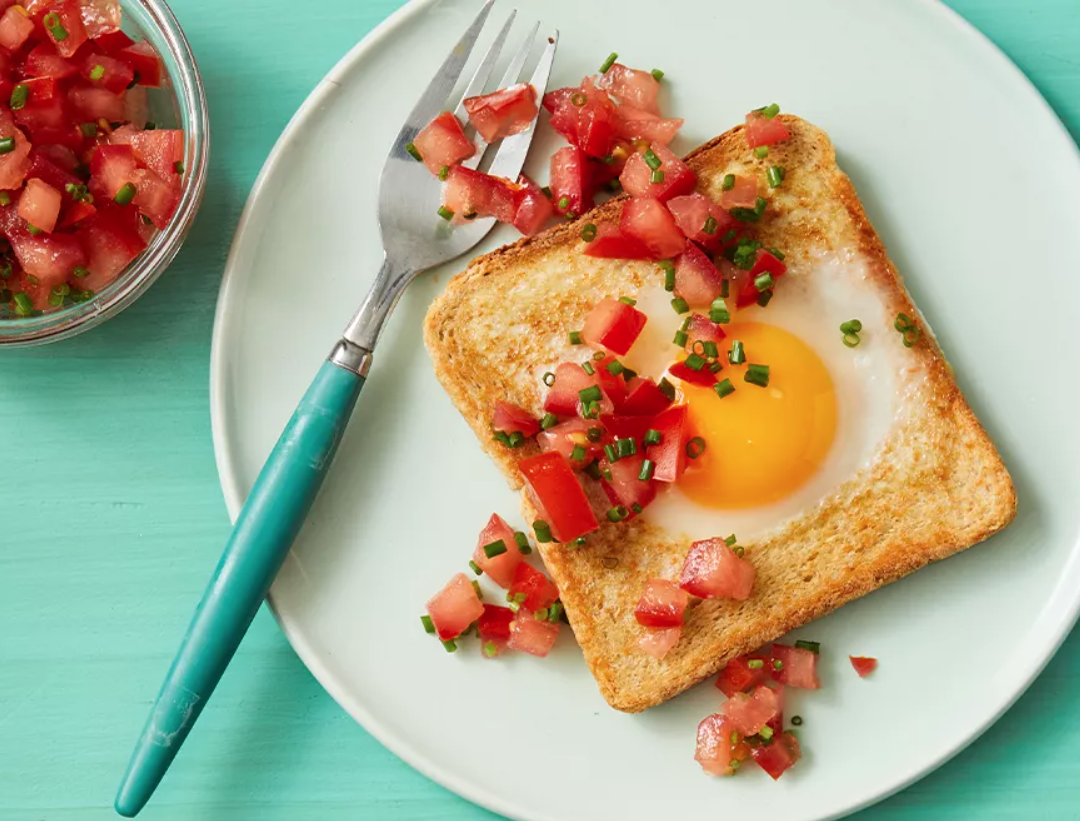
Egg Toast with Salsa
-
1 slice whole-wheat bread, toasted
-
1 egg, cooked in ¼ tsp. olive oil
-
Pinch each of salt and pepper
-
2 Tbsp. pico de gallo or salsa
Top bread with the egg, salt, pepper and pico de gallo.
-
1 medium banana
A.M. Snack (102 calories)
-
1 pear, sliced topped with cinnamon
Lunch (325 calories)
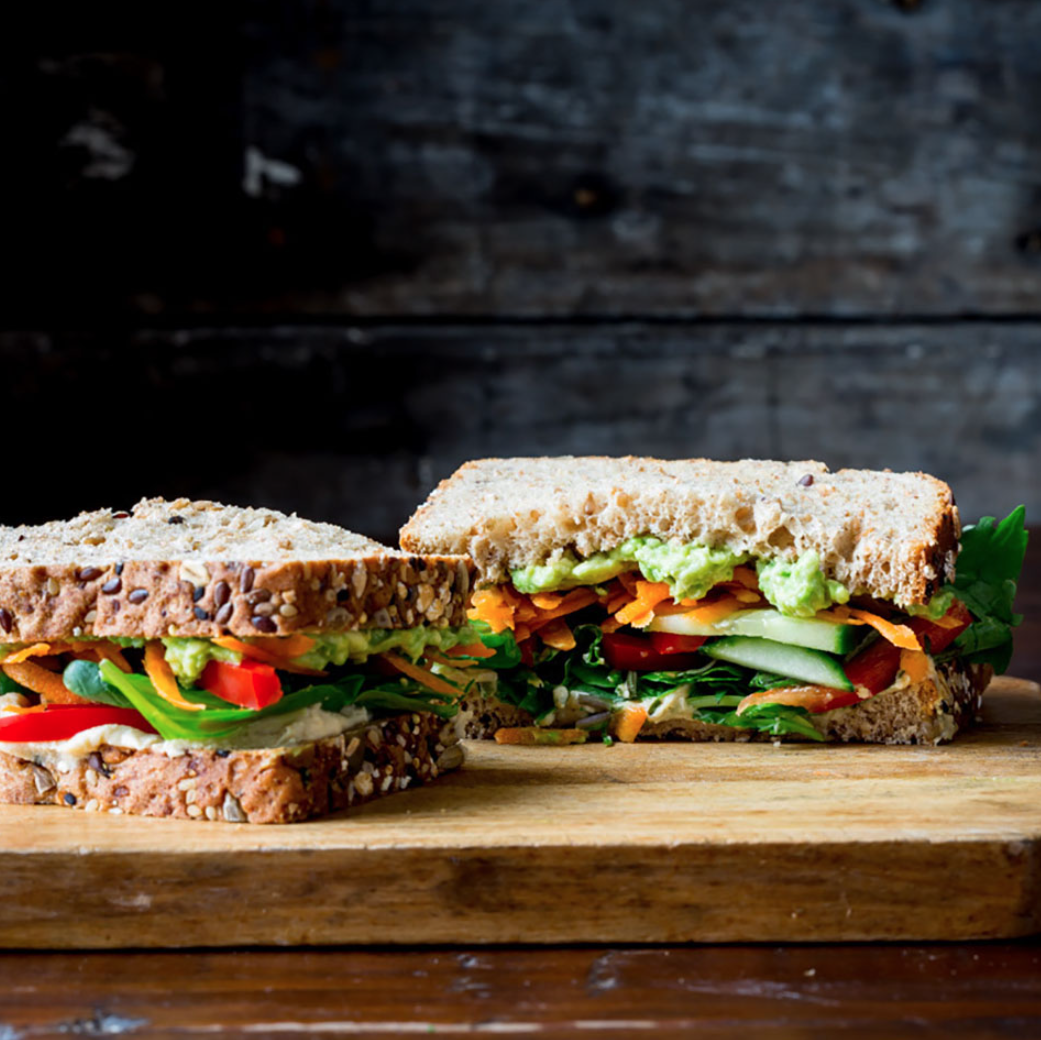
Veggie-Hummus Sandwich
1 serving
-
2 slices whole-grain bread
-
3 TBSP hummus
-
¼ avocado, mashed
-
½ cup mixed salad greens
-
¼ medium bell pepper, sliced
-
¼ cup sliced cucumber
-
¼ cup shredded carrot
Spread one slice of bread with hummus and the other with avocado. Fill the sandwich with greens, bell pepper, cucumber and carrot. Slice in half and serve.
P.M. Snack (48 calories)
-
¾ cup raspberries
Dinner (450 calories)
Lemon-Herb Salmon with Caponata & Farro
1 serving
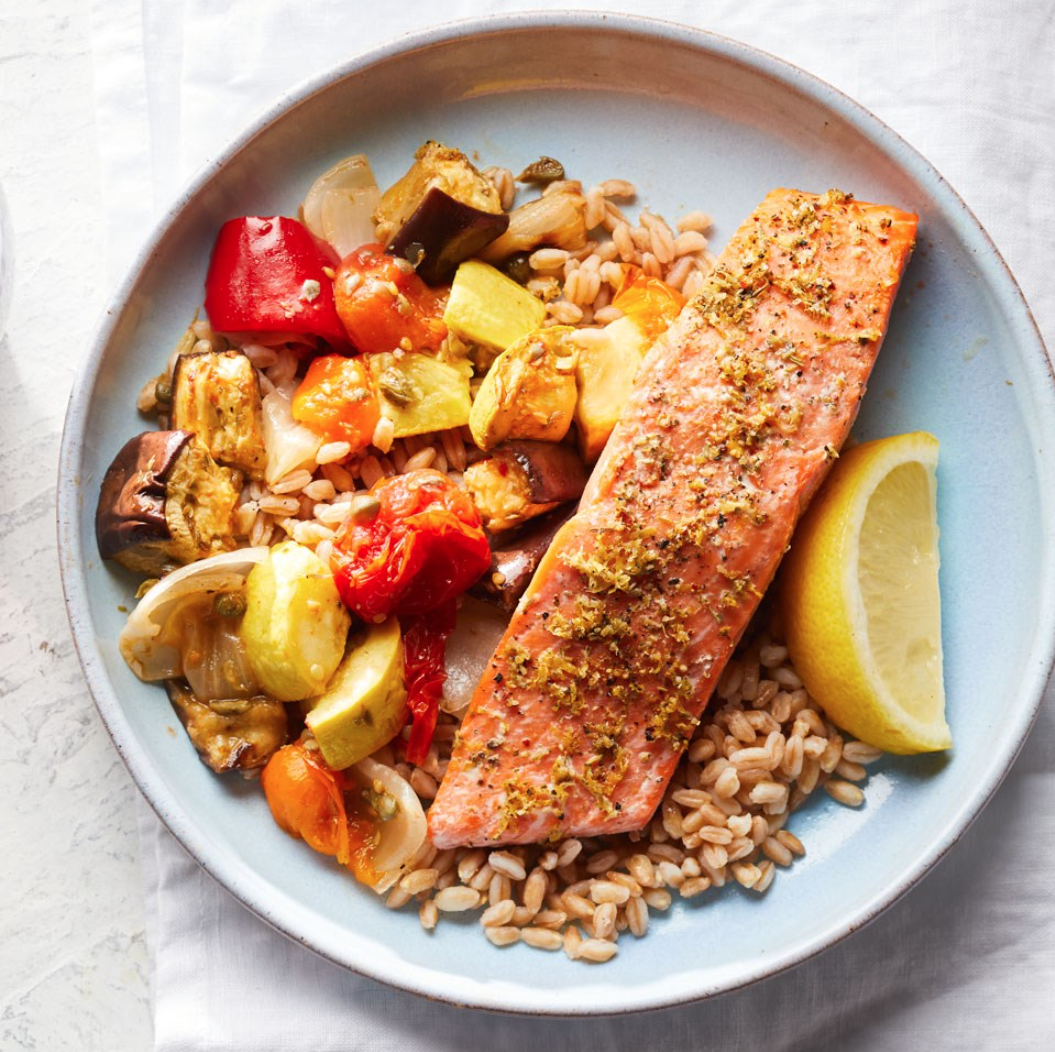
Ingredients
-
2 cups water
-
⅔ cup farro
-
1 medium eggplant, cut into 1-inch cubes
-
1 red bell pepper, cut into 1-inch pieces
-
1 summer squash, cut into 1-inch pieces
-
1 small onion, cut into 1-inch pieces
-
1½ cups cherry tomatoes
-
3 tablespoons extra-virgin olive oil
-
¾ teaspoon salt, divided
-
½ teaspoon ground pepper, divided
-
2 tablespoons capers, rinsed and chopped
-
1 tablespoon red-wine vinegar
-
2 teaspoons honey
-
1¼ pounds wild salmon, cut into 4 portions
-
1 teaspoon lemon zest
-
½ teaspoon Italian seasoning
-
Lemon wedges for serving
Directions
-
Position racks in upper and lower thirds of oven; preheat to 450 degrees F. Line 2 rimmed baking sheets with foil and coat with cooking spray.
-
Bring water and farro to a boil in a saucepan. Reduce heat to low, cover and simmer until just tender, about 30 minutes. Drain if necessary.
-
Meanwhile, toss eggplant, bell pepper, squash, onion and tomatoes with oil, ½ teaspoon salt and ¼ teaspoon pepper in a large bowl. Divide between the prepared baking sheets. Roast on the upper and lower racks, stirring once halfway, until the vegetables are tender and starting to brown, about 25 minutes. Return them to the bowl. Stir in capers, vinegar and honey.
-
Season salmon with lemon zest, Italian seasoning and the remaining ¼ teaspoon each salt and pepper and place on one of the baking sheets. Roast on the lower rack until just cooked through, 6 to 12 minutes, depending on thickness. Serve the salmon with the farro, vegetable caponata and lemon wedges.
Daily Totals: 1,192 calories, 60 g protein, 161 g carbohydrates, 37 g fiber, 40 g fat, 1,438 mg sodium

Mediterranean Diet
The Mediterranean diet, based on the traditional foods of people living around the Mediterranean Sea, has long been viewed as a dietary pattern worthy of having many benefits on cardiovascular health. This traditional diet is rich in legumes, vegetables, fruits, nuts, and fish with moderate mealtime red wine and minimal refined sugars, dairy and red or processed meat, and most fat consumption coming from olive oil.
Mediterranean Diet Friendly Simple Sheet Pan Chicken Shawarma Bowls
Prep: 20 minutes
Cook: 30-35 minutes + Time to marinate
Total: 50-55 minutes
Serves 4
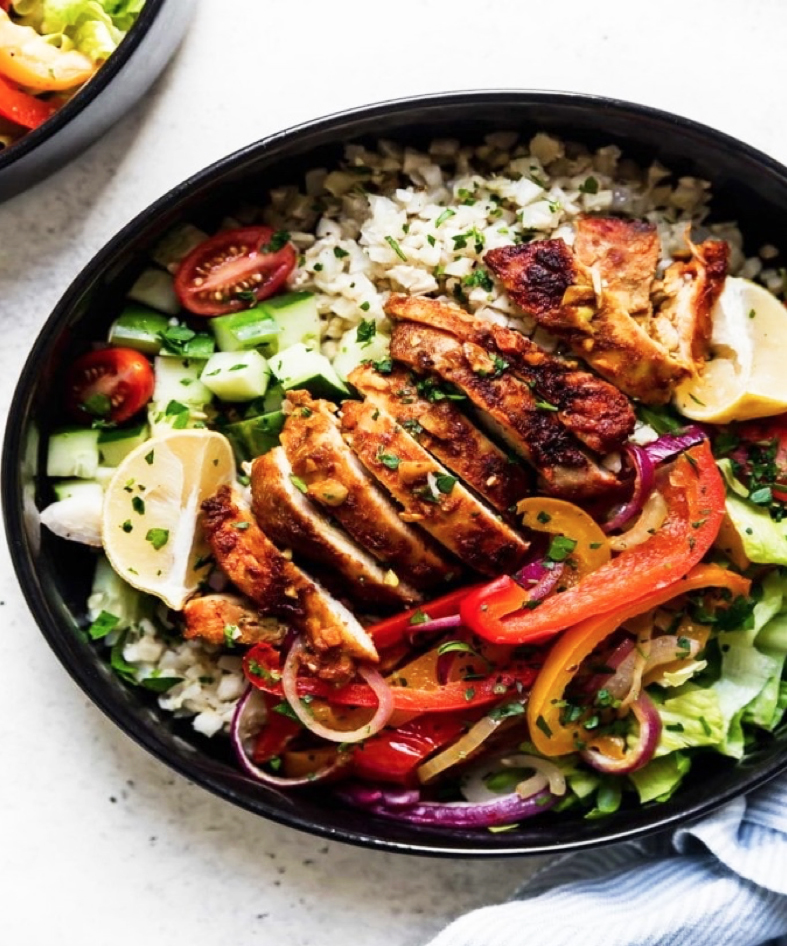
Ingredients
-
1½ lbs. Chicken Thighs
-
3 Garlic Cloves, Minced
-
1 tsp Ground Coriander
-
1½ tsps. Paprika
-
2 tsps. Ground Cumin
-
½ tsp. Ground Turmeric
-
1 tsp. Sea Salt
-
¼ tsp. Black Pepper
-
3 Tbsp. Olive Oil
-
1 Lemon
-
½ medium Red Onion
-
2 small Bell Peppers
-
4 cups Riced Cauliflower
-
4 cups Romaine Lettuce
-
1 cup Grape or Cherry Tomatoes
-
1 small Cucumber, diced
-
Handful of Cilantro, chopped
Directions
-
Make the Marinade: Place the chicken in a zip-top bag or container with lid. Combine the garlic, cumin, coriander, paprika, turmeric, salt and black pepper in a small bowl. Add 2 Tablespoons of oil and the juice of ½ the lemon and stir to combine.
-
Pour the marinade over chicken and massage to coat well. Refrigerate for at least 30 minutes and up to 48 hours.
-
When ready to cook, preheat the oven to 375 degrees. Line a large rimmed baking sheet with parchment paper.
-
Remove the chicken from the marinade and discard any excess marinade. Place the chicken in a single layer on one end of the baking sheet and bake for 15 minutes.
-
After 15 minutes, remove the pan from the oven. Add the peppers and onions to the middle of the baking sheet and the riced cauliflower to the end opposite the chicken. Drizzle cauliflower with the remaining 1 tablespoon of oil and toss gently to coat.
-
Return the pan to the oven. Bake an additional 15-20 minutes or until the chicken is cooked through (165 degrees on an instant read thermometer) and veggies are tender.
-
Remove the pan from the oven. Serve the chicken and peppers over the cauliflower rice along with chopped lettuce, tomatoes and cucumbers. Drizzle with remaining lemon juice.
Nutrition Information
Serving Size: ¼ recipe
Calories: 435; Fat: 27g (Sat Fat: 5g); Sodium: 734mg; Carbohydrate: 22g; Protein:33g
Cholesterol is not all inherently bad, in fact it is produced naturally in the body to help build cells. Problems develop when our bodies contain too much cholesterol. This can be caused from eating too many high cholesterol foods, poor lifestyle choices, family history, age and gender. Blue Cross & Blue Shield of Mississippi’s Healthy You! wellness benefit covers an annual cholesterol screening based on age and any health risks.
Resources
What Your Cholesterol Levels Mean
HDL (Good), LDL (Bad) Cholesterol and Triglycerides
Prevention and Treatment of High Cholesterol (Hyperlipidemia)
Lowering your high LDL cholesterol
Easy Sheet Pan Chicken Shawarma Bowls With Veggies
Guarneri, MD, FACC, Mimi and Bradley, ND, MPH, Ryan. “Integrative Nutritional Therapy for Cardiovascular Disease.” Integrative Nutrition Therapy, edited by Marian, Mary J., Mullin, Gerald E., CRC Press Taylor & Francis Group, 2016, 143-188.
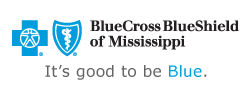



 Women's Health
Women's Health Eat Healthy
Eat Healthy Exercise
Exercise Health & Wellness Articles
Health & Wellness Articles